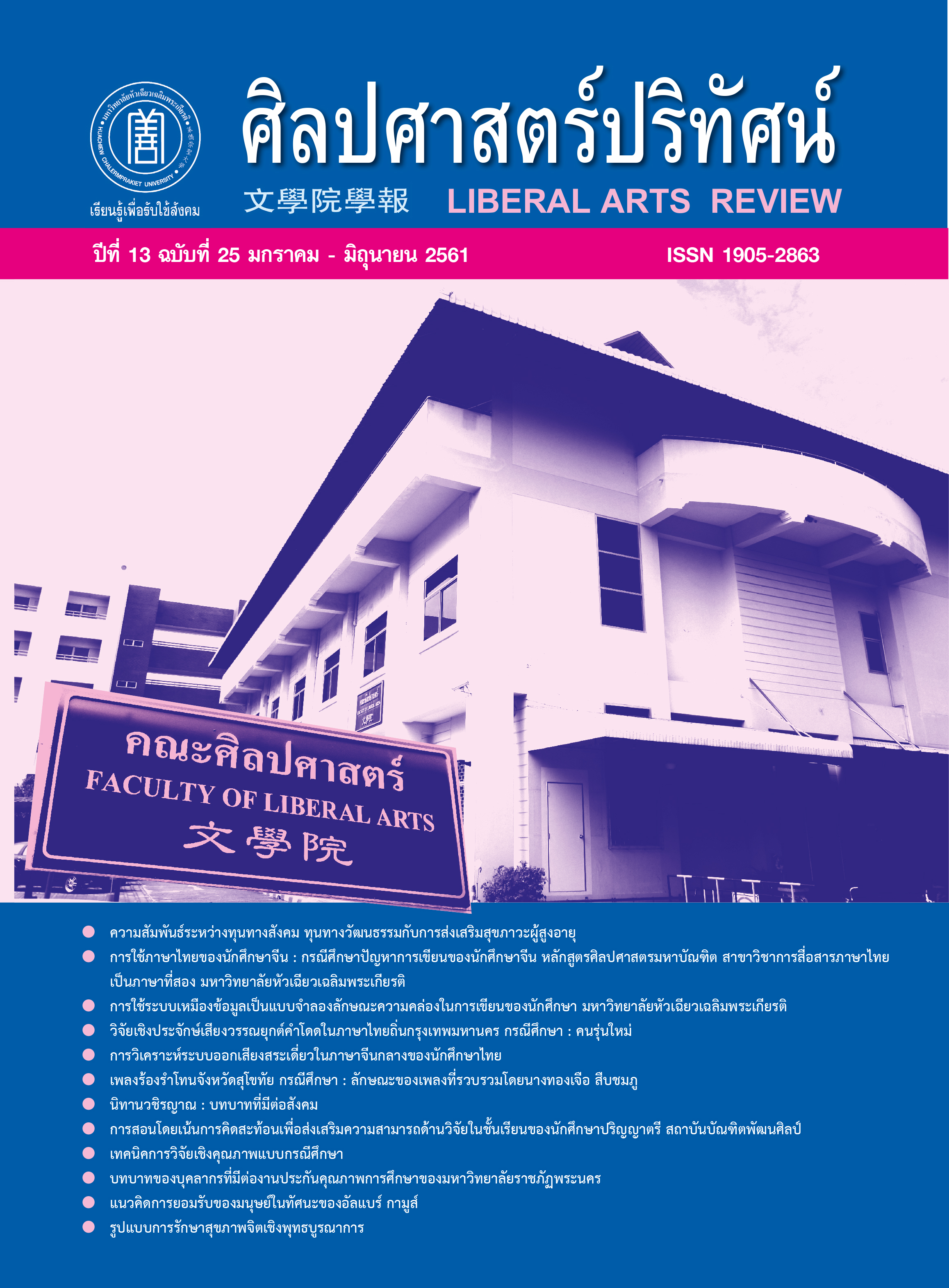Using a data mining system to model aspects of writing fluency in ESL students of Huachiew Chalermprakiet University
Keywords:
Writing fluency, semi-structured writing, linear regression, FLO3Abstract
The objective of the study was to assess the effects of practice in semi-structured writing on the writing fluency of L2 writers, using a model that was developed by the researcher. First, the data was collected from a class of fourth year English-Chinese major students at Huachiew Chalermprakiet University. Between the pre-test and the post-test, the students followed an 8-week program that involved regular semi-structured writing about journal topics of a subjective nature. The following attributes were obtained from the students’ writing: the speed of writing, total length of both paragraphs, time taken, the number of errors of each type, the error rate for each type, the “lexical richness or range” and “FLO1” rating. “FLO1” refers to: “The rating of an L2 writer’s writing by an L1 writer1, who uses various attributes to measure that writing’s quality, excluding the attribute of writing speed.” Then these attributes were used to construct a model of the factors affecting the rating of L2 writing fluency. Next this model was applied to measure the impact of practice in semi-structured writing about journal topics on the fluency of L2 writers. Fluency was measured by creating a new attribute called “FLO3.” In contrast to the attribute of FLO1, FLO3 includes the actual writing speed. The values of FLO3 were calculated by applying the statistical method of linear regression. The values of the following attributes decreased in the post-test: the mean overall error rate, the mean total effect for the five statistically significant error types, and the mean FLO1 rating. The values of the following attributes increased in the post-test: the mean writing speed and the mean FLO3 rating. Finally, some implications of the results for the construct of writing fluency were considered.
Downloads
Published
How to Cite
Issue
Section
License
บทความที่ได้รับการตีพิมพ์เป็นลิขสิทธิ์ของวารสารศิลปศาสตร์วิชาการและวิจัย
ข้อความที่ปรากฏในบทความแต่ละเรื่องในวารสารวิชาการเล่มนี้เป็นความคิดเห็นส่วนตัวของผู้เขียนแต่ละท่านไม่เกี่ยวข้องกับมหาวิทยาลัยหัวเฉียวเฉลิมพระเกียรติ และคณาจารย์ท่านอื่นๆ ในมหาวิทยาลัยฯ แต่อย่างใด ความรับผิดชอบองค์ประกอบทั้งหมดของบทความแต่ละเรื่องเป็นของผู้เขียนแต่ละท่าน หากมีความผิดพลาดใดๆ ผู้เขียนแต่ละท่านจะรับผิดชอบบทความของตนเองแต่ผู้เดียว




